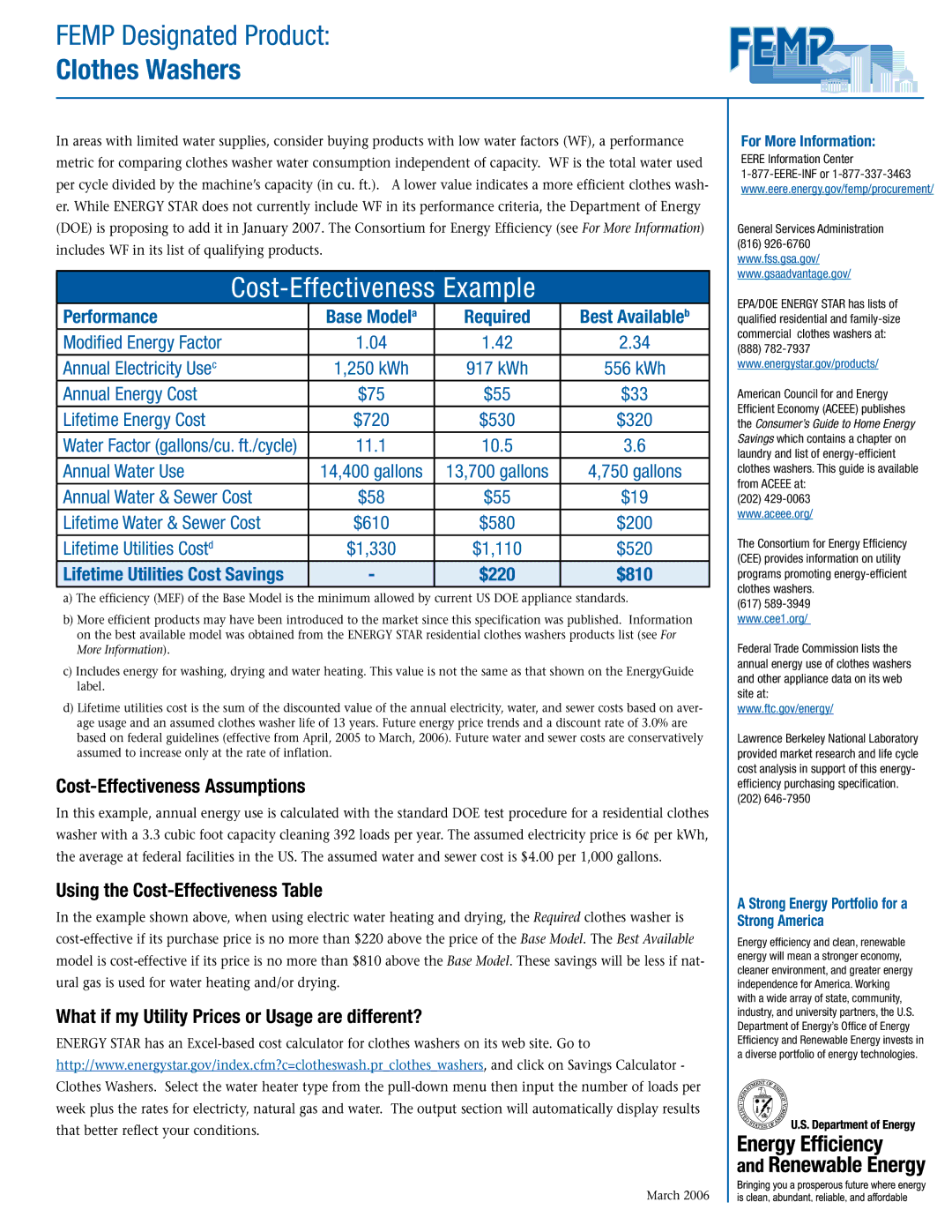Clothes Washer specifications
The Energy Tech Laboratories Clothes Washer is a cutting-edge appliance designed to revolutionize the way we do laundry. This innovative washing machine combines advanced technology with user-centric design to deliver exceptional cleaning performance while also emphasizing energy efficiency and environmental sustainability.One of the standout features of this clothes washer is its Energy Star certification, which ensures that it meets strict energy efficiency guidelines set by the U.S. Environmental Protection Agency. This means not only does it save users money on utility bills, but it also reduces the household's carbon footprint. The machine utilizes a high-efficiency direct drive motor that minimizes energy consumption while maximizing performance, allowing users to wash more clothes using less water and electricity.
The Energy Tech Laboratories Clothes Washer incorporates advanced sensing technology that automatically adjusts water levels and cycle times based on the load size and fabric type. This intelligent system prevents overloading and ensures that every garment receives the optimal wash, improving cleaning results and extending the life of clothes. Additionally, the washer features multiple wash cycles tailored to various fabric types, including delicate, normal, heavy-duty, and even sanitizing modes designed for eliminating bacteria and allergens.
An innovative feature of this washer is its self-cleaning mechanism. This technology helps maintain the appliance's cleanliness by automatically running a cleaning cycle periodically, preventing odor and mold buildup. Furthermore, the Energy Tech Laboratories Clothes Washer is equipped with a Wi-Fi connectivity option, allowing users to control and monitor their laundry remotely via a smartphone app. This feature offers real-time updates on wash cycles and even enables users to schedule loads at their convenience.
The user-friendly interface includes a large, intuitive touchscreen display, making it easy to navigate settings, select cycles, and monitor progress. The sleek, modern design not only looks great in any laundry room, but it is also built with durable materials to withstand years of use.
In conclusion, the Energy Tech Laboratories Clothes Washer stands out in the market for its energy efficiency, advanced sensing technologies, and user-friendly features. With its commitment to sustainability and high-performance cleaning, this washer is an excellent choice for eco-conscious consumers looking to modernize their laundry experience.

